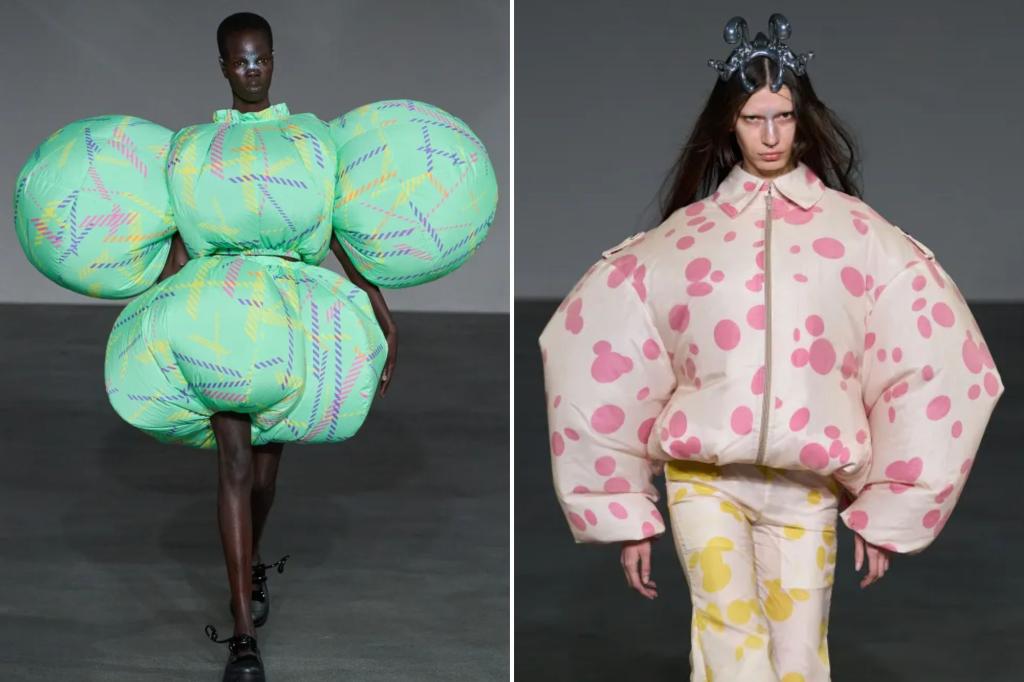Air-conditioned clothing is a new trend that is gaining popularity in the fashion industry. Anrealage, a Japan-based brand, showcased a collection of inflatable garments at Paris Fashion Week, powered by fan technology from Kuchofuku. Designer Kunihiko Morinaga hopes to offer a sustainable solution to hot weather by introducing air-conditioned clothes to the market. This innovative idea has generated interest among consumers and industry professionals, with mainstream brands like Nike x Off-White incorporating similar designs into their collections.
Kuchofuku, founded by Hiroshi Ichigaya, has been a pioneer in the air-conditioned clothing market for the past twenty years. The company initially introduced cooling work jackets for blue-collar workers in Japan, creating a multi-million dollar market for their products. Now, Kuchofuku is expanding its customer base by collaborating with mainstream brands and integrating air-conditioned technology into everyday fashion. This shift reflects a growing interest in air-conditioned clothing as a lifestyle choice rather than just a functional necessity for industrial workers.
Meanswhile, a Japanese menswear label, has also embraced air-conditioned clothing technology in its garments. Designer Naohiro Fujisaki saw the potential of incorporating this technology into fashion after observing the jackets worn by industrial workers. Despite the initial perception of air-conditioned clothing as unfashionable, Meanswhile has seen an increase in sales and interest from customers, particularly overseas. The company’s fan-powered garments have sold out each season, indicating a growing demand for innovative and functional clothing solutions.
Ian Paley, the owner of Garbstore in the UK, believes that air-conditioned clothing is just beginning to make its mark in the fashion industry. While the current technology for ventilation jackets is still in its early stages, Paley envisions a future where air-conditioned clothing becomes more commonplace, starting in Japan before spreading to other markets. Other brands like Hidesign have also launched their version of air-con clothes for the spring/summer 2025 season, with a focus on minimizing the bulky appearance of the garments while maintaining their cooling functionality.
Despite the growing popularity of air-conditioned clothing, there are challenges in balancing style and technology. A lack of airflow within the garments can compromise their cooling effectiveness, requiring designers to find innovative solutions to maintain both functionality and aesthetic appeal. Consumers like Souta Yamaguchi, the fashion director at Hidesign, have embraced air-conditioned clothing for its cooling benefits and stylish appearance, wearing it on the streets and attracting positive attention from others. The interest in air-con technology was evident when the Meanswhile team wore their air-conditioned jackets in Paris, sparking curiosity and admiration from passersby.
Overall, the rise of air-conditioned clothing represents a shift towards functional and innovative fashion solutions that address the challenges of extreme weather conditions. Designers, brands, and consumers are increasingly embracing this trend, with the potential for air-conditioned clothing to become a staple in everyday fashion. As technology advances and designs evolve, air-conditioned clothing is expected to become more mainstream, providing a stylish and practical option for staying cool in hot climates. With continued innovation and experimentation, air-conditioned clothing is poised to revolutionize the fashion industry and offer a sustainable solution to the challenges of extreme temperatures.


